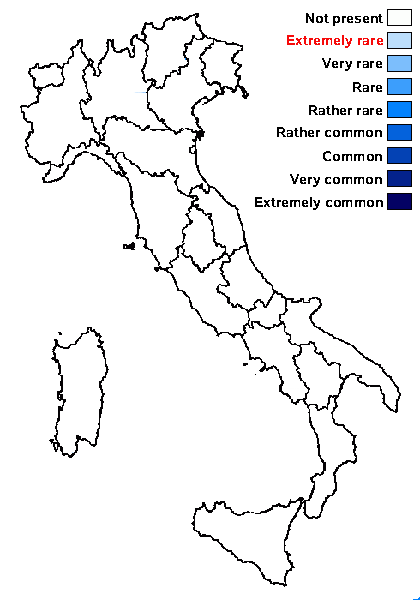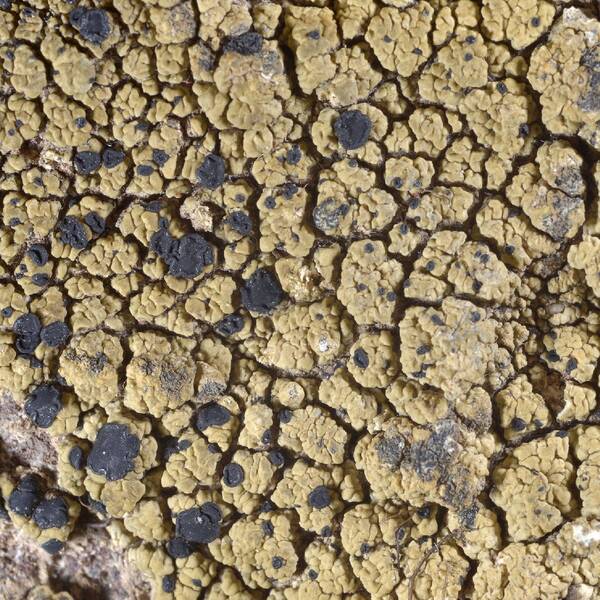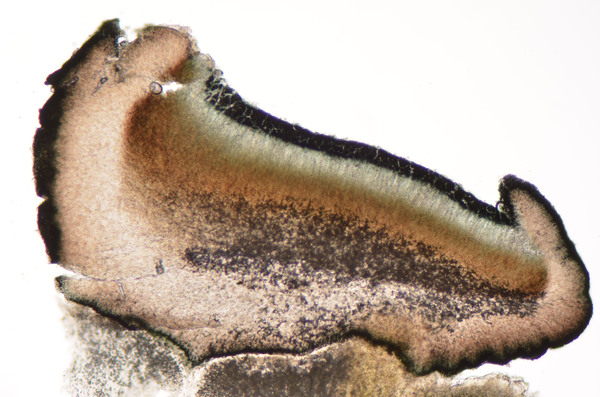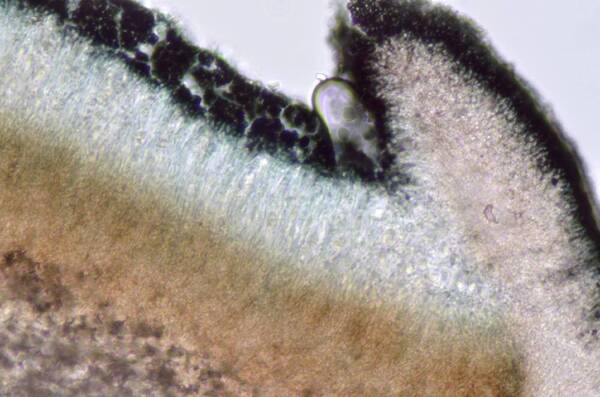Lecidea sauteri Körb.
Syst. Lich. Germ.: 252, 1855
Synonyms:
Distribution:
Description: Thallus crustose, episubstratic, up to 1.5 mm thick, yellowish white to pale yellowish brown, of strongly convex to bullate, 0.8-3 mm wide and 0.5-1.3 mm tall areoles which are usually subdivided into much smaller units, with or without a dark prothalline line. Medulla white, I+ intensely blue. Apothecia lecideine, black, sessile and strongly constricted at base, up to 3 mm across, with a flat, dull, disc and a thick, prominent, persistent, undulate, shiny proper margin. Proper exciple up to 200 µm wide laterally, blackish green in outer part, colourless within, of loosely interwoven, 1.3-1.7 µm thick hyphae, I+ deep blue: epithecium dark green to blue-green, 10-18 µm high; hymenium colourless 40-60 µm high, I+ blue; paraphyses simple, usually not anastomosing, with capitate, 4-5 µm wide apical cells; hypothecium yellowish brown, 90-140 µm high. Asci 8-spored, clavate, Lecidea-type. Ascospores 1-celled, hyaline, oblong, 7-9 x 3-4 µm. Pycnidia black, immersed. Conidia cylindrical, 10.5-11.5 x 1-1.3 µm. Spot tests: cortex and medulla K-, C-, KC-, P-. Chemistry: confluentic acid syndrome. Note: a rare, probably holarctic species found on steeply inclined to rain-sheltered surfaces of siliceous cliffs in the subalpine and alpine belts; known only from the Eastern Alps (Austria); to be looked for in the Italian Alps.
Growth form: Crustose
Substrata: rocks
Photobiont: green algae other than Trentepohlia
Reproductive strategy: mainly sexual
In underhangs rarely wetted by rain

Predictive model

Frank Bungarts - CC- BY-NC - Source: https://lichenportal.org/cnalh/taxa/index.php?taxon=54194&clid=1184
United States, Arizona, Coconino, San Francisco Peaks, Mt. Humphreys 35.35 -111.6666667 Elevation: 3780 m
Growth form: Crustose
Substrata: rocks
Photobiont: green algae other than Trentepohlia
Reproductive strategy: mainly sexual
In underhangs rarely wetted by rain

Predictive model

 INDEX FUNGORUM
INDEX FUNGORUM
 GBIF
GBIF



